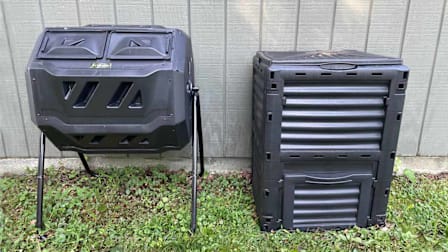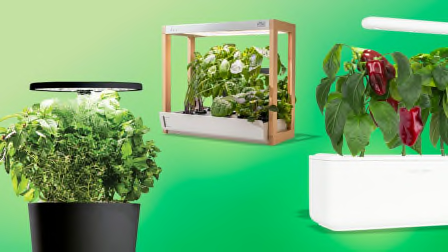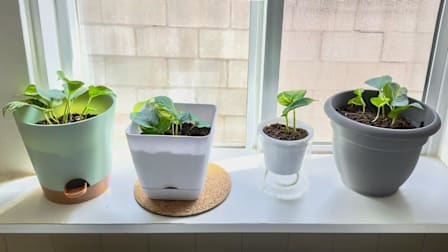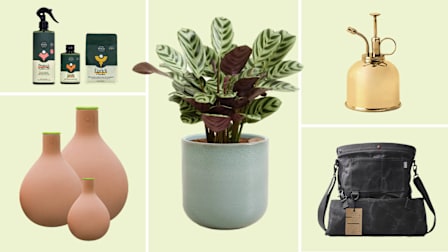Check Your Technique: How to Clean Your Plants
Maintaining your indoor plants is simpler than you think—but keep chemicals and cold water away from them
When you shop through retailer links on our site, we may earn affiliate commissions. 100% of the fees we collect are used to support our nonprofit mission. Learn more.
True green thumbers know there’s no shame in giving your peace lilies, spider plants, and aloe vera cute names. You fret over your indoor plants receiving enough sunlight and water, invest in plant-care staples like quality planters and pruning scissors, and wouldn’t dream of packing for your weeks-long vacation without leaving your plants in the care of a roommate or self-watering planter.
How to Clean Plants With Thick Foliage
Indoor plants with thick, smooth foliage, like snake plants and fiddle leaf figs, seem like they can handle more physical stress than fragile plants, but that doesn’t mean they benefit from a heavy hand when cleaning them.
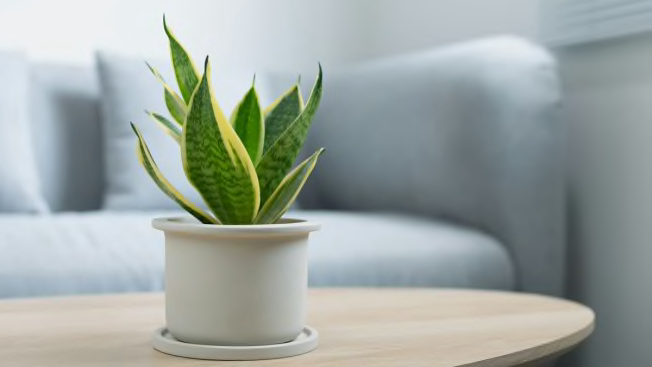
Photo: Shutterstock Photo: Shutterstock
In fact, it’s very likely you already have the only dusting tools you truly need to polish these types of plants. “You can clean them with a dry wipe with an unscented Swiffer, rag, or paper towel,” says Christopher Satch, founder and CEO of NYC Plant Help and professor at the New York Botanical Garden. “Don’t wet-wipe when dusting, as this clumps the dust into a gross paste that gets smeared on the plant.”
If you don’t feel like any surface is truly spotless without an additional cleaning agent, Horticulture Expert Skylor Young at The Plant Doctors recommends using neem oil, which is a naturally occurring pesticide found in seeds from the neem tree, and a microfiber towel. “Spray the towel first,” Young says. “Hold a leaf/frond with one hand to stabilize it, then use the other to wipe the leaf. Be sure to get both sides. This is also great for preventing pests like mealy bugs and scale. We mix our neem oil with a little peppermint and lavender oil, which is helpful in repelling bugs. It also smells nice.”
Amy Ziff, founder and executive editor of our partner Made Safe, an organization that screens the ingredients of products for banned/restricted ingredients, tells CR that neem is a good alternative for tending to plants. “As with any plant compound—just because it is ‘natural’ doesn’t mean you can use it without regard for smart practices and careful usage,” Ziff says. “In this case, neem is a naturally occurring pesticide so use it carefully following the recommendations on the package/manufacturers guidelines.”
If you have sprayed your plants with some kind of pesticide though, Satch says you’ll need to wash all of it off after you get rid of the pests. “Just like oil clogs my skin pores, the popular neem oil clogs plant pores and if used too heavily, can start to choke the plant and make the leaves turn yellow,” Satch says.
How to Clean Plants With Fragile Foliage
Taking a Swiffer dusting pad or paper towel to a fragile, fluffy fern and other more delicate indoor plants is not going to effectively remove dust and dirt and may destroy their leaves.
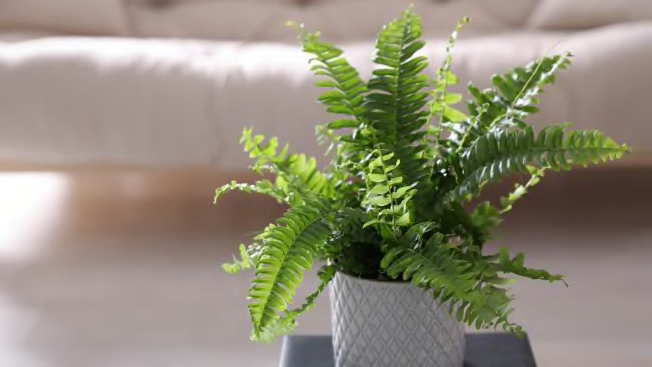
Photo: Shutterstock Photo: Shutterstock
“Ferns are too fluffy and their foliage is too delicate to use these things on,” Satch says. “Instead, take your fern to a shower and rinse all the dust off. Always use lukewarm water; never cold. The fern will appreciate the extra moisture.” Satch adds that you should use lukewarm water on all your plants because most houseplants are tropical in nature and never get water that’s as cold as what’s coming from the tap.
“Additionally, cold water is the ideal temperature for fungal spores to germinate and infect the leaves, causing brown leaf tips and other blemishes,” Satch says. “To add physics as well, warmer water dissolves things better. Cold water doesn’t dissolve anything as well, making it worse for cleaning. It’s the same reason why dishwashers use hot water (but don’t use hot water on your plants!).”
This same “water blast” rule applies with other difficult-to-clean plants, as well, including one we know, love, and can’t stand cleaning: String of Pearls plants.
How to Clean Plants With Needles and Thorns
Should you or shouldn’t you clean them—that’s the question you may have asked yourself while eyeing thorny plants like prickly pear cacti. If yours gets dusty, Young says it’s a good idea to grab a Q-Tip and wear cactus or thorn-proof gloves to rid its thorns of debris. “Skip the neem unless you’re fighting a pest issue,” Young says.
Satch agrees with the Q-tip method for thorny plants, but also recommends blasting them with lukewarm water in the shower.
How Often Should You Clean Plants?
The good news is that you don’t have to clean your plants all that often, though your environment will determine how regularly your indoor plants may require a water blast, neem polish, or Q-tip care.
“Plants may not have noses like we do, but they still need to breathe,” Satch says. “The only way that they can breathe is through the pores (or stomata) in their leaves. Different [homes] accumulate dust at different rates, but it’s safe and recommended to dust your plants once a month to once a quarter.”
Young concurs that, as long as your plants don’t have pests, cleaning them once a month should be adequate.
What Other Maintenance Do Indoor Plants Need?
Since you’re already on board with giving your plants a good, old-fashioned cleaning, why not take a few extra minutes each month to maintain them so that they live a long, healthy existence? According to Young, pruning plants is a great thing to do with the right purpose. “Foliage has a purpose: to help bring nutrients back to the plant from sunlight and moisture in the air,” Young says. “If the leaf is damaged, it becomes more work for the plant. In other words, if the leaves have a negative ROI, trim [them].”
Young says you should trim off leaves that are more than 50% distressed; an overwatered Monstera resulting in a couple brown and yellow leaves, for example. “If a plant has outgrown its space, trim it back to keep it in a positive relationship with its environment,” Young says. “For many plants, pruning will give it an opportunity to sprout more growth from the trim location. Depending on the plant, the trimmed section can often be propagated.” Young says not to trim more than one-third of the plant.
Taking good care of your indoor plants can also help you spot an infection and stop it in its tracks before it has a chance to destroy more of your plant. It’s good horticultural practice to pull off all dead leaves as you go, though Satch says you should try not to touch dead leaves and then live leaves without washing your hands first—the leaf may have died from an infection, and you don’t want to spread that to the living leaves. You also shouldn’t clean multiple plants with the same duster or rag and can wash rags between cleaning plants to prevent the spread of diseases and bugs, according to Satch. “Also, even though it’s widely believed that crispy leaf tips are from humidity—that is a myth,” Satch says. “Crispy leaves, nine times out of 10, are from mild fungal infections. If you feel safe doing so, burning the tips off with a lighter not only removes the brown, but sterilizes the leaf tip to prevent further infection.”
As far as providing advice on plant products you should and shouldn’t use, plant food is more “user-friendly” than a fertilizer and you can use it when watering plants so you don’t have to remember to add it once a month, according to Young. “It’s also more gentle, so plants are less likely to burn,” Young says. “It more closely mimics their natural habitat, where they are getting nutrients from the soil quite slowly from leaves breaking down, rain water, and so on.” The “burn” Young refers to is also called “leaf scorch” and can be caused by improper watering and/or too much fertilizer—spots can appear on the leaf, the margins of the leaves can appear dry and burnt, and leaves can drop prematurely as a result.
Young recommends using your finger, rather than a soil moisture meter, to check if the plant is ready to be watered. “As a general rule of thumb, [if] the top inch or two of soil is dry, it’s time to water,” Young says. “Your pointer finger is a great measure of that depth, and is consistent every time. A soil meter can go far deeper into the soil, which should stay damp on a consistent basis for most plants.”
One last tip that Satch offers that he says is a “big” one is that every six months or so, you’ll want to pull the plants out of where they are and clean the shelves or window sills where they reside. “This is to get rid of cobwebs, but more important to clean up the dust and debris that plant pests can hide in,” Satch says.
How Well Can Houseplants Improve Indoor Air Quality?
Few people would argue that houseplants aren’t great. There are studies that show interacting with healthy indoor plants may reduce stress and improve our mental well-being. Studies aside, plants add color, uniqueness, and vitality to our living spaces. But there is still debate over whether plants can truly have an impact when it comes to improving our indoor air quality.
The belief that plants may be the answer to some of our indoor pollution problems seems to stem from a 1989 NASA study that was conducted to find ways to better clean the air in space stations, according to the American Lung Association. Researchers found that, yes, in the extremely closed-off chamber of a space station, plants could remove harmful gases like formaldehyde and volatile organic compounds (VOCs). But our living spaces are not closed-off and contained like space station chambers—and a reviewer from the U.S. Environmental Protection Agency explained in a 1992 memo that it would take the placement of 680 houseplants in a typical house to achieve the same results reached in the NASA chamber study.
Still, a simple Google search continues to yield current results for the “best houseplants for cleaning indoor air.” This paper is just one example of several I found that reviews existing literature about plants that are supposedly superior to others at removing pollutants (houseplants that are said to remove the highest number of pollutants are peace lilies, Florist’s chrysanthemums, and snake plants, for what it’s worth).
Take this information with a grain of salt, according to experts like Bryan Cummings, PhD, a research scientist at Drexel University and co-author of a 2019 study on how indoor plants do not improve air quality. In a real building, Cummings tells CR, air moves in and out through doors, windows, and cracks. This movement of air rids the indoors of certain pollutants like VOCs that plants are said to also target. Typically, all the air in a home is replaced about once every hour (more quickly in an older, leaky building, and more slowly in a newer, better-sealed building).
Cummings’ co-authored study determined that the rate at which plants remove VOCs from the air is about 1,000 times slower than the rate of air exchange, and that you’d need somewhere between one and 100 plants *per square foot* of floor area for plant filtration to be meaningful. “Of course, the high end of this range is completely ludicrous and meaningless in a real building,” Cummings says. “And even if you could get close to this number, the room would then function like a greenhouse and the plants would create more problems than they’d solve like high humidity and the emission of other pollutants.”
Does this mean you should leave that Spider plant at the nursery and not bring it home and give it a cute name? Of course not.
“Houseplants are still great—I have several in my own apartment,” Cummings says. “They’re nice to look at, and studies do suggest they positively impact our mood and productivity. But if you want cleaner air in your home that will lead to tangible health benefits, there are three easy things that I try to do. Try to make sure the products you bring into your home don’t have added scents and chemicals. Open the window if the outdoor air quality is good. And use correctly sized portable HEPA filters to substantially reduce particulate matter and allergen levels.”
@consumerreports Maintaining your indoor plants is simpler than you may think. Learn more through the link in our bio 🌿 #indoorplants #planttok #planttiktok #houseplants
♬ original sound - Consumer Reports

















